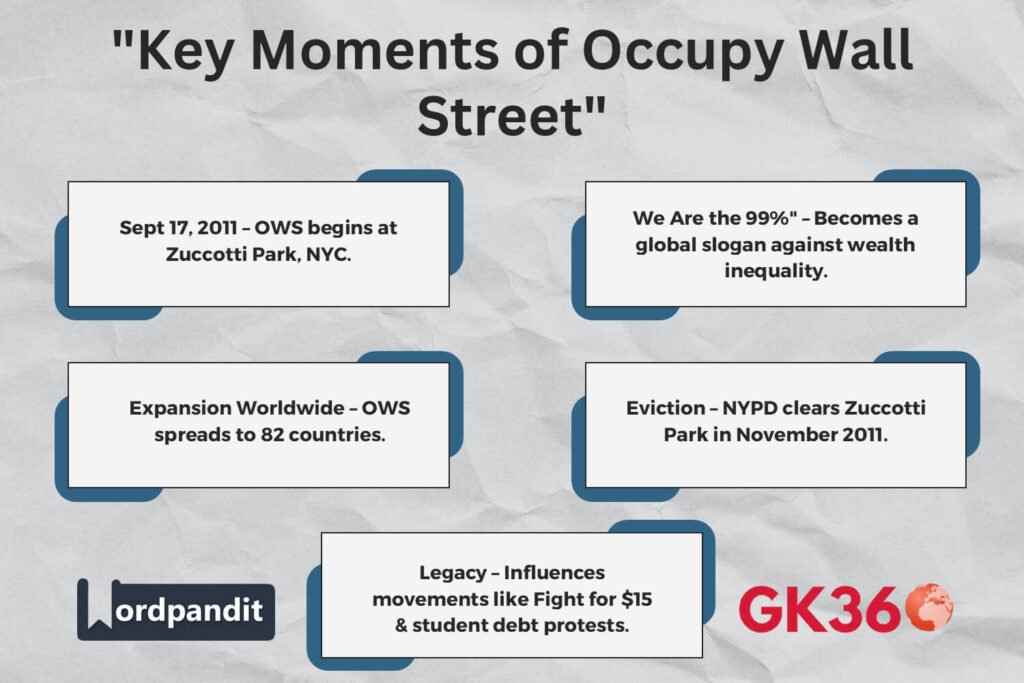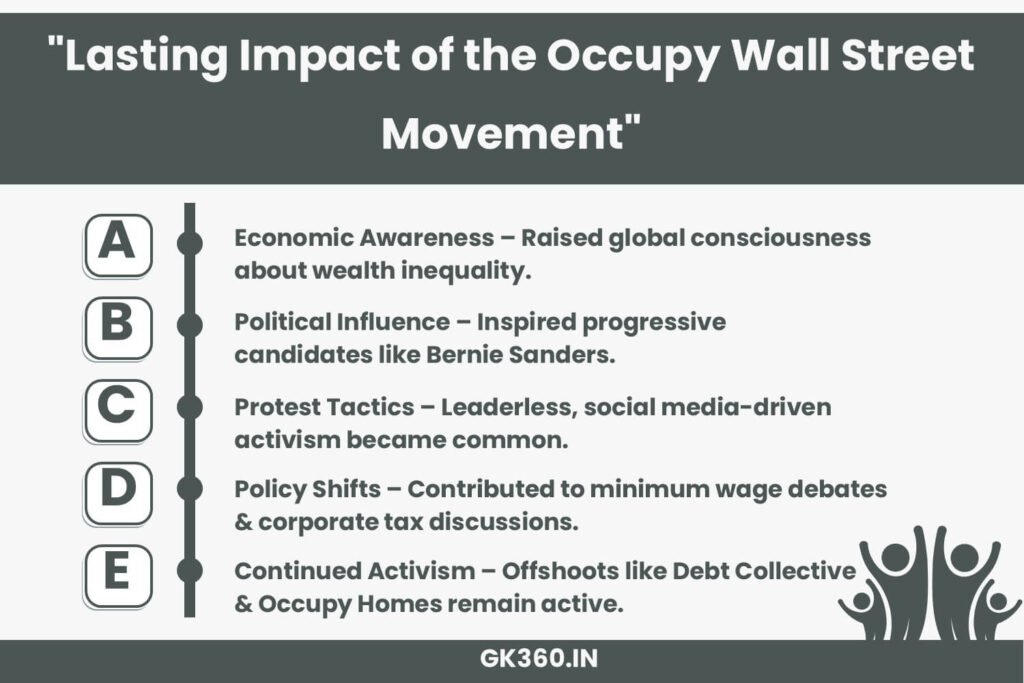This Content Is Only For Subscribers
Occupy Wall Street Explained: Origins, Impact & Legacy of the 99% Movement
What Was Occupy Wall Street?
Background & Origins
Occupy Wall Street (OWS) was a protest movement that began on September 17, 2011, in New York City’s financial district. It was driven by public frustration over economic inequality, corporate greed, and political corruption.

Table of Contents
- What Was Occupy Wall Street?
- Why Did Occupy Wall Street Happen?
- How Occupy Wall Street Went Global
- Did Occupy Wall Street Actually Change Anything?
- Lessons & The Future of Economic Justice Movements
- FAQs About Occupy Wall Street
- Conclusion & Call to Action
The Role of Adbusters & Social Media
The movement was initially proposed by Adbusters, a Canadian anti-consumerist magazine. Social media played a critical role in mobilizing supporters, using hashtags like #OccupyWallStreet to spread the message.
Key Goals & Messages
- “We Are the 99%”: Highlighting wealth disparity between ordinary citizens and the top 1% of earners.
- Economic Justice: Advocating for fair wages, student debt relief, and stricter Wall Street regulations.
- Corporate Accountability: Calling for reforms to limit corporate influence in politics.
Why Did Occupy Wall Street Happen?
2008 Financial Crisis: The Spark Behind OWS
The 2008 financial crisis, caused by reckless banking practices and mortgage fraud, led to massive job losses and economic hardship. Many people saw the bailout of big banks as unfair, as ordinary citizens continued to struggle.
Growing Wealth Inequality: “We Are the 99%”
By 2011, income inequality had reached historic levels, with the wealthiest 1% holding a disproportionate share of resources. The slogan “We Are the 99%” became a rallying cry against economic injustice.
Political Frustration: Corporate Influence in Politics
OWS also protested corporate influence in politics, especially the role of money in elections and lobbying. Protesters demanded reforms to reduce the power of large corporations over government policies.
How Occupy Wall Street Went Global
The movement quickly spread beyond Zuccotti Park in NYC, inspiring similar protests in over 80 countries. Major cities like London, Madrid, and Sydney saw demonstrations echoing OWS’s call for economic justice.
Did Occupy Wall Street Actually Change Anything?
Policy Shifts & Political Impact
- Increased discussions on wealth inequality, leading to movements like Fight for $15 (minimum wage campaign).
- Influenced progressive politicians like Bernie Sanders, who made economic justice a key part of his platform.
- Raised awareness about campaign finance reform and Wall Street regulations.
Cultural Impact – How OWS Shaped Modern Activism
- Encouraged decentralized, grassroots activism, influencing movements like Black Lives Matter and Extinction Rebellion.
- Used social media effectively to mobilize global support.
Protest Tactics That Live On Today
- Leaderless, decentralized structure.
- Use of viral hashtags to amplify messages.
- Public space occupations as a form of protest.
Lessons & The Future of Economic Justice Movements
1. Decentralized Movements Can Be Powerful
- OWS demonstrated that leaderless protests can amplify grassroots voices.
- Future movements like Black Lives Matter and Extinction Rebellion adopted similar structures.
2. Social Media is a Game Changer
- Hashtags like #OccupyWallStreet helped spread the message globally.
- Digital activism is now a core strategy for modern protests.
3. Sustained Policy Efforts Are Necessary
- OWS raised awareness, but without clear legislative goals, long-term change was limited.
- Future movements should combine activism with policy advocacy for lasting impact.
4. The Wealth Gap is Still Growing
- Economic inequality remains a pressing issue, fueling new activism.
- Political candidates continue to discuss minimum wage increases, tax reform, and corporate accountability.

FAQs About Occupy Wall Street
1. What did Occupy Wall Street accomplish?
OWS shifted public discourse on income inequality, inspired movements like Fight for $15, and increased scrutiny on Wall Street regulations.
2. Who funded OWS?
Unlike traditional protests, OWS was largely crowdfunded by supporters, covering supplies, food, and legal support.
3. Is Occupy Wall Street still active?
The physical encampments ended, but offshoot movements like Occupy Homes and Debt Collective continue advocating for economic justice.
Conclusion & Call to Action
Occupy Wall Street transformed how we discuss economic justice. While the physical protests have ended, their legacy lives on in modern movements fighting for fair wages, student debt relief, and corporate accountability.
Key Takeaways Table
| Aspect | Details |
|---|---|
| Origins | Began on September 17, 2011, in NYC’s Zuccotti Park. |
| Core Message | “We Are the 99%” – Highlighted wealth disparity. |
| Key Causes | 2008 Financial Crisis, corporate greed, political corruption. |
| Global Reach | Inspired protests in over 80 countries. |
| Tactics Used | Leaderless structure, social media-driven activism. |
| Impact on Policy | Helped push discussions on minimum wage, student debt, and corporate accountability. |
| Legacy | Inspired movements like BLM, Extinction Rebellion, and the Fight for $15. |
Related terms
- Occupy Wall Street
- We Are the 99%
- Wall Street Protests
- Economic Inequality Movement
- History of Occupy Wall Street
- OWS Impact on Politics
- Wealth Inequality Protests
- Corporate Greed Protest
- Economic Justice Movement
- How Occupy Wall Street Changed Activism





